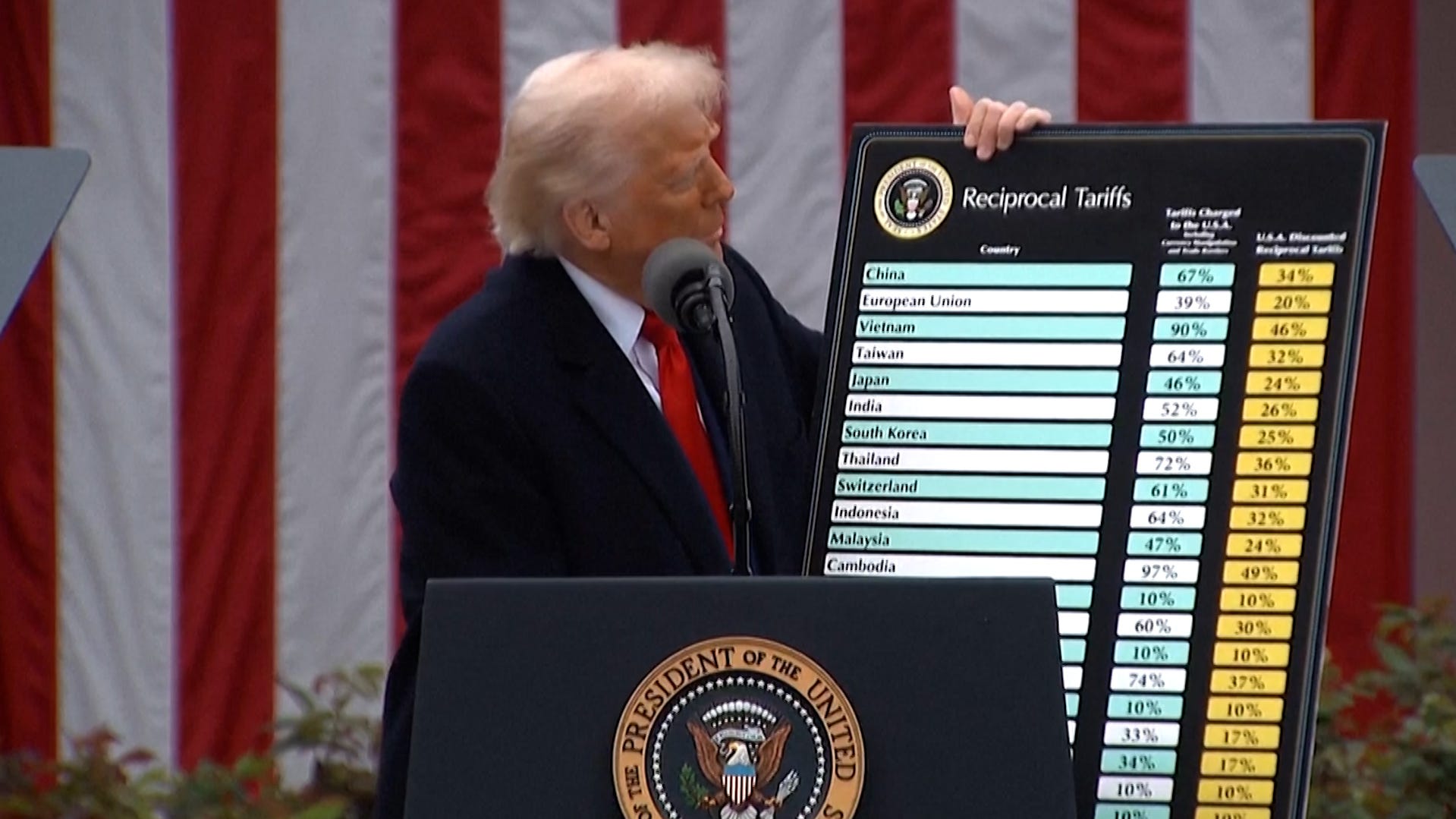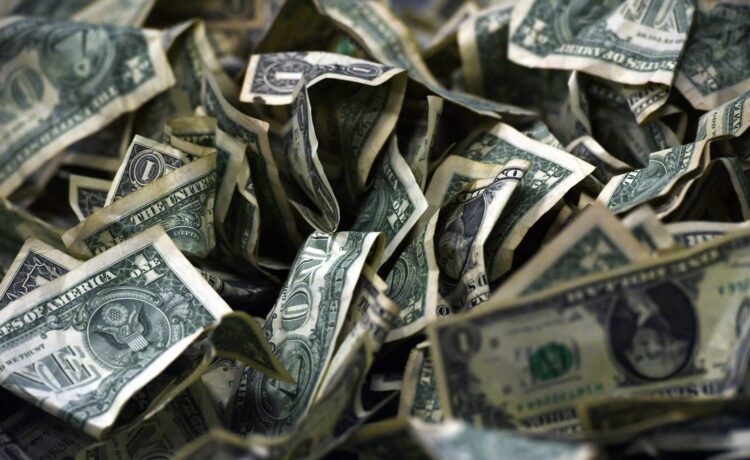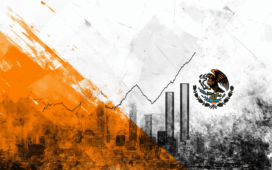
Where does the money generated from tariffs go?
The Trump administration predicts tariffs will generate billions of dollars, but where will that money go?
- Long-dated Treasury yields climbed steadily all week, with the 10-year yield breaking past 4.50% — a level not seen since February.
- Gold reaffirmed its role as a safe haven, surging to a new all-time high above $3,200 per ounce.
Volatility sparked by President Donald Trump’s aggressive trade tariffs has extended beyond Wall Street, rattling the Treasury market and the U.S. dollar over the week.
The turmoil is now challenging the long-held narrative of “American exceptionalism” that has underpinned global confidence in the U.S. economy for decades.
A broad trade-weighted measure of the dollar fell Friday to its lowest level since April 2022. The greenback is now down 10% since Trump’s inauguration, raising concerns about its global reserve status.
Although recent inflation reports for March showed cooling price pressures across both consumer and producer fronts, bond markets didn’t react with the usual optimism.
Long-dated Treasury yields climbed steadily all week, with the 10-year yield breaking past 4.50% — a level not seen since February. The 30-year yield briefly hit 5%, signaling that bond vigilantes — investors who dump bonds in protest of policy mistakes — have made a comeback.
Amid widespread selling of U.S. Treasuries and the dollar, gold reaffirmed its role as a safe haven, surging to a new all-time high above $3,200 per ounce.
On Wednesday, stocks skyrocketed after the Trump administration announced a 90-day suspension of tariffs for most trade partners — China being the notable exception. The move triggered the biggest one-day rally on Wall Street since 2008.
Still, that positive momentum faded quickly. By the week’s end, investor sentiment was once again clouded by uncertainty. The White House remains committed to its hardline tariff policy against China, even as Beijing retaliated with counter-tariffs on U.S. goods that now reach as high as 125%.
Meanwhile, first-quarter earnings reports from banking giants including JPMorgan Chase, Morgan Stanley and Wells Fargo delivered encouraging numbers. Yet, investors remained cautious as the true impact of tariffs likely won’t be visible until the second quarter results.
“The economy is facing considerable turbulence,” JPMorgan CEO Jamie Dimon said.
More troubling are signs from Main Street. American consumers are growing increasingly pessimistic.
The University of Michigan’s preliminary consumer sentiment index for April plunged to its lowest level since mid-2022. Expectations for inflation jumped sharply: One-year outlooks soared to 6.7%, the highest since 1981, while five-year expectations climbed to 4.4%, the highest since 1990.
Benzinga is a financial news and data company headquartered in Detroit.





